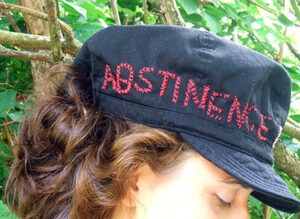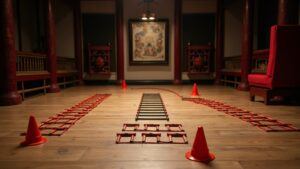Meditation offers a practical way to manage stress, especially when anxiety shows up during intense training or athletic preparation. Many athletes and trainees find their minds racing before big events or busy training sessions, and meditation techniques can help quiet those internal jitters. Training-induced anxiety isn’t unusual. With the right approach, I’ve learned to use meditation to restore focus, reduce tension, and get more enjoyment from both practice and performance.

Understanding Training-Induced Anxiety
Anxiety before, during, or after training happens to many people. The pressure to improve, push physical limits, or meet certain expectations can sometimes cause overwhelming worry or stress, and these feelings may pop up for anyone, no matter their athletic background. This may show up as a racing heartbeat, tight muscles, an upset stomach, or trouble concentrating. In my experience, ignoring these feelings can sap energy, make workouts less productive, or lead to burnout over time. Finding effective ways to manage anxiety keeps motivation high and training enjoyable.
Research from sports psychology shows that athletes often face a blend of excitement and anxiety around competition or hard training. When unchecked, this stress can impact not only performance but general well-being. Meditation is one science-backed way to lower anxiety and promote a sense of calm, helping me approach each session with better balance. (source)
How Meditation Helps Manage Anxiety
Meditation works by guiding the mind away from stressful thoughts and building awareness of the present moment. For me, consistent use brings a clear sense of calm, even on days when nerves seem to take over. Meditation also gives me tools to reframe negative thinking or stop overanalyzing my physical sensations, which is especially handy when training pushes me out of my comfort zone.
There are different ways meditation helps with training-induced anxiety:
- Calms the Nervous System: Deep breathing and mindfulness can lower stress hormones and steady a rapid heartbeat.
- Improves Focus: By training attention, meditation helps me tune out distractions and stay present with my workout.
- Reduces Mental Fatigue: A key benefit is learning to spot thought patterns that drain energy or build self-doubt.
It’s worth mentioning that there are broader benefits, too. Many who practice meditation notice improvements beyond training, like greater emotional stability and the ability to handle setbacks with a clearer mind. Even in daily life, meditation can help us practice patience and understanding, both with ourselves and others.
Core Meditation Techniques for Anxiety
Experimenting with different meditation methods helped me find the routines that fit best with my training. Here are some of the top techniques that consistently bring results:
- Mindfulness Meditation: This involves noticing thoughts, feelings, and sensations as they arise, without judgment. I usually pick a quiet spot, sit comfortably, and pay attention to my breath or body. If thoughts wander to worries about an upcoming session, I guide them back to the present. Just ten minutes of mindfulness meditation before or after training helps me find perspective and calm.
- Breath Awareness: Focusing on breathing is a simple way to trigger the body’s relaxation response. I use this technique when I feel my pulse picking up before a challenging workout. Slowly inhaling through my nose and exhaling through my mouth, I count each breath to anchor my thoughts. Doing this even for a short time helps slow the mind and settle nerves.
- Guided Visualization: With this technique, I listen to audio guides or imagine a calm, peaceful place. I also picture myself moving confidently through my training, which can reduce anticipatory anxiety. Visualization isn’t about ignoring nerves, but about rehearsing a positive approach to what comes next.
- Body Scan Meditation: Here, attention shifts progressively through each part of the body, starting from toes up to the head. When I’m sore or tense, this helps me relax areas holding stress and reconnect with my physical state in a positive, nonjudgmental way.
Some people also like to incorporate sound meditation, using soft background noise, gentle music, or even nature sounds to help anchor attention. This can be especially powerful for those who have trouble focusing in silence.
A Step-by-Step Approach to Starting Meditation
Consistency is more valuable than long, complicated sessions. Building meditation into my routine made the biggest difference. Here is how I recommend starting out:
- Choose a Quiet Space: Find a comfortable location where you can sit or lie down with no major distractions or noise.
- Pick a Technique: Try mindfulness, breath awareness, guided visualization, or a body scan. If one feels awkward, try another until you find what fits.
- Start Small: Even two to five minutes is enough for a beginner. It’s better to practice a little every day than try and force long sessions.
- Use a Timer or App: Many free meditation apps provide guided sessions for stress or performance anxiety. These offer structure and a gentle introduction if you’re unsure how to begin.
- Track Your Feelings: After each meditation, I take a moment to notice and note any changes. Over time, patterns often emerge showing what works best.
Everyday repetition helps train the mind, making it easier, not only to meditate, but to stay calm and resilient during training. Eventually, meditation can feel like a normal part of your post-workout routine, just like stretching or cooling down.
Other Useful Practices to Support Meditation
Meditation becomes even more effective when paired with other practices. Here are a few additions I’ve found useful:
- Breathing Exercises: Box breathing or alternate nostril breathing are two patterns that can be used before workouts or competitions to shift focus instantly.
- Journaling: Writing down thoughts about training or anxiety helps process emotions and channels them constructively.
- Mindful Walking: Incorporating mindfulness into walks, focusing on steps, sounds, or sights, keeps anxiety in check without a formal sitting session.
- Restorative Yoga: Simple restorative poses help unwind physical and mental tension, making it easier to transition into a meditative state.
Beyond these practices, connecting with other athletes or friends who use meditation can be motivating and offer a sense of community. Sharing techniques or meditating together occasionally can make habits stick and boost accountability.
Common Hurdles and How to Handle Them
Meditation takes patience, and I’ve run into my share of challenges while forming the habit. Here are a few common issues and how I worked through them:
- Restlessness: It’s normal to feel fidgety early on. Shorter sessions and focusing on slow breath cycles help ease into stillness.
- Impatience: Expecting instant calm can make anxiety worse. I treat meditation like a skill; improvement comes with time and practice.
- Doubt: Some days, I question if meditation really helps. Keeping a log of mood and performance often shows clear benefits over weeks or months, not just days.
- Inconsistent Routine: Making meditation part of a post-workout warmdown or morning routine helps avoid forgetting or skipping sessions.
Restlessness
Getting used to sitting still with your thoughts can feel strange. If restlessness is strong, I practice walking meditation or move to breath exercises to create a sense of rhythm. This helps me transition gradually to more traditional forms.
Self-Doubt
Doubting the process is common, especially if progress feels slow. I find it useful to set realistic expectations. Improvement in anxiety happens in small, sometimes subtle steps.
Advanced Strategies to Deepen Meditation Impact
Once the basics become comfortable, there are ways to deepen the effect and adapt sessions to more specific anxiety triggers around training:
Active Meditation: Practices like tai chi or mindful movement blend gentle physical activity with meditative focus. I use these on days when energy is high or sitting still feels hard.
Affirmations: Silently repeating supportive phrases builds self-trust and calm. For example, repeating “I am prepared and focused” links the meditation session to performance confidence.
Progressive Muscle Relaxation: Combining breath meditation with progressively tensing and relaxing muscle groups helps break the connection between anxious thoughts and physical tension.
Experimenting helps tailor meditation to my personal training demands. Over time, it becomes a toolkit I can reach for, whether prepping for an event, decompressing afterwards, or dealing with everyday stress.
Real-World Benefits: Meditation in My Training Routine
Meditation influences more than anxiety control for me. Training sessions become more enjoyable, and I find it easier to bounce back after hard days or setbacks. By practicing regularly, I also notice a greater sense of self-awareness, making it less likely that stress or negative thoughts will build up unnoticed.
- Performance Consistency: Staying centered means I make smarter decisions under pressure and avoid overreacting to mistakes.
- Recovery: Meditation supports restful sleep, which is super important for muscle repair and energy levels.
- Motivation: Bringing attention to small wins and effort, rather than just outcomes, keeps me motivated even when big progress feels slow.
The positive changes become more noticeable the longer meditation is practiced. It’s not instant, but over months of steady effort, my training environment began to feel less tense and more rewarding overall.
Frequently Asked Questions
Here are a few questions I’ve come across regarding meditation and managing training anxiety:
Question: How quickly will I notice results from meditation?
Answer: Some people feel a little calmer after the first try, but for a real change in anxiety or stress, daily practice over a few weeks usually brings the biggest benefits.
Question: What works better, guided or silent meditation?
Answer: It depends on personal preference. I like mixing both. Guided sessions are helpful for structure, especially when anxious, while silent meditation builds more self-awareness with practice.
Question: Can I meditate during intense or group training sessions?
Answer: Brief breath awareness or body checks work well even in busy or shared spaces. Even one minute of mindful breathing can lower anxiety without leaving the group.
Bringing Meditation Into Everyday Training
Using meditation to manage training-induced anxiety is a practical, proven way to improve training enjoyment, boost focus, and foster resilience. No matter what kind of physical activity you enjoy or how intense your schedule gets, building meditation into your routine offers positive tools for your mind and body every day.
With patience and consistent effort, meditation can easily become a reliable part of your training toolkit, helping you move through stress, appreciate each session, and develop healthier ways to respond to challenges along the way. Over the long run, the results from consistent, mindful practice make all the difference for both performance and peace of mind.





